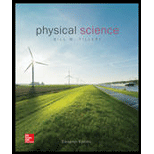
Physical Science
11th Edition
ISBN: 9780077862626
Author: Bill Tillery, Stephanie J. Slater, Timothy F. Slater
Publisher: McGraw-Hill Education
expand_more
expand_more
format_list_bulleted
Textbook Question
Chapter 8, Problem 11PEB
An electric motor draws a current of 11.5 A in a 240 V circuit. What is the power of this motor in W?
Expert Solution & Answer
Want to see the full answer?
Check out a sample textbook solution
Students have asked these similar questions
An electric motor draws a current of 15.5 A in a 240 V circuit. What is the power of this motor in Watts?
An electric dryer connected to a 120 V source draws 5.46 amps of current. What is the power, in Watts, consumed by the dryer?
A light bulb has a resistance of 240Ω when operating at a voltage of 120V . What is the current through the light bulb?
Chapter 8 Solutions
Physical Science
Ch. 8 - Prob. 1ACCh. 8 - Prob. 2ACCh. 8 - Prob. 3ACCh. 8 - 4. Millikan measured the charge on oil droplets...Ch. 8 - Prob. 5ACCh. 8 - Prob. 6ACCh. 8 - Prob. 7ACCh. 8 - Prob. 8ACCh. 8 - Prob. 9ACCh. 8 - Prob. 10AC
Ch. 8 - Prob. 11ACCh. 8 - Prob. 12ACCh. 8 - Prob. 13ACCh. 8 - Prob. 14ACCh. 8 - Prob. 15ACCh. 8 - Prob. 16ACCh. 8 - Prob. 17ACCh. 8 - Prob. 18ACCh. 8 - Prob. 19ACCh. 8 - Prob. 20ACCh. 8 - Prob. 21ACCh. 8 - Prob. 22ACCh. 8 - Prob. 23ACCh. 8 - Prob. 24ACCh. 8 - Prob. 25ACCh. 8 - Prob. 26ACCh. 8 - 27. Elements that have properties of both the...Ch. 8 - Prob. 28ACCh. 8 - Prob. 29ACCh. 8 - Prob. 30ACCh. 8 - Prob. 31ACCh. 8 - Prob. 32ACCh. 8 - Prob. 33ACCh. 8 - Prob. 34ACCh. 8 - Prob. 35ACCh. 8 - Prob. 36ACCh. 8 - Prob. 37ACCh. 8 - Prob. 38ACCh. 8 - Prob. 39ACCh. 8 - Prob. 40ACCh. 8 - Prob. 41ACCh. 8 - Prob. 42ACCh. 8 - Prob. 43ACCh. 8 - Prob. 44ACCh. 8 - Prob. 45ACCh. 8 - Prob. 46ACCh. 8 - Prob. 47ACCh. 8 - Prob. 48ACCh. 8 - Prob. 49ACCh. 8 - Prob. 1QFTCh. 8 - Prob. 2QFTCh. 8 - Prob. 3QFTCh. 8 - Prob. 4QFTCh. 8 - Prob. 5QFTCh. 8 - Prob. 6QFTCh. 8 - Prob. 7QFTCh. 8 - Prob. 8QFTCh. 8 - Prob. 9QFTCh. 8 - Prob. 10QFTCh. 8 - Prob. 11QFTCh. 8 - Prob. 12QFTCh. 8 - Prob. 1FFACh. 8 - Prob. 2FFACh. 8 - Prob. 3FFACh. 8 - Prob. 4FFACh. 8 - Prob. 5FFACh. 8 - Prob. 6FFACh. 8 - Prob. 1PEBCh. 8 - Prob. 2PEBCh. 8 - Prob. 3PEBCh. 8 - Prob. 4PEBCh. 8 - Prob. 5PEBCh. 8 - 6. If the charge-to-mass ratio of a proton is 9.58...Ch. 8 - Prob. 7PEBCh. 8 - 8. Using any reference you wish, write the...Ch. 8 - Prob. 9PEBCh. 8 - 10. Referring to Figure 8.16 only, write the...Ch. 8 - 11. An electric motor draws a current of 11.5 A in...Ch. 8 - Prob. 12PEBCh. 8 - Prob. 13PEBCh. 8 - Prob. 14PEBCh. 8 - Prob. 15PEBCh. 8 - Prob. 16PEBCh. 8 - Prob. 17PEBCh. 8 - Prob. 18PEBCh. 8 - Prob. 19PEB
Knowledge Booster
Learn more about
Need a deep-dive on the concept behind this application? Look no further. Learn more about this topic, physics and related others by exploring similar questions and additional content below.Similar questions
- A coffeemaker draws 10 A of current operating at 120 V. How much electrical energy does the coffeemaker use each second?arrow_forwardWhat voltage is involved in a 1.44-kW short circuit through a 0.100- resistance?arrow_forwardA 165F capacitor is used in conjunction with a dc motor. How much energy is stored in it when 119 V is applied?arrow_forward
- Appliances with heating elements require which of the following? (8.3) (a) a large current (b) a large resistance (c) a low joule heatarrow_forwardHow much will it cost to run an electric motor for10 days if the motor draws 15 A of current from the240-V power line? The cost of electricity is 7.5¢/kWharrow_forwardA light bulb has 20 ohms of resistance, and it consumes 50 W of power. How much current flows through the light bulb?arrow_forward
arrow_back_ios
arrow_forward_ios
Recommended textbooks for you
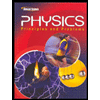 Glencoe Physics: Principles and Problems, Student...PhysicsISBN:9780078807213Author:Paul W. ZitzewitzPublisher:Glencoe/McGraw-Hill
Glencoe Physics: Principles and Problems, Student...PhysicsISBN:9780078807213Author:Paul W. ZitzewitzPublisher:Glencoe/McGraw-Hill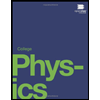 College PhysicsPhysicsISBN:9781938168000Author:Paul Peter Urone, Roger HinrichsPublisher:OpenStax College
College PhysicsPhysicsISBN:9781938168000Author:Paul Peter Urone, Roger HinrichsPublisher:OpenStax College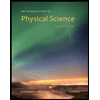 An Introduction to Physical SciencePhysicsISBN:9781305079137Author:James Shipman, Jerry D. Wilson, Charles A. Higgins, Omar TorresPublisher:Cengage Learning
An Introduction to Physical SciencePhysicsISBN:9781305079137Author:James Shipman, Jerry D. Wilson, Charles A. Higgins, Omar TorresPublisher:Cengage Learning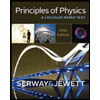 Principles of Physics: A Calculus-Based TextPhysicsISBN:9781133104261Author:Raymond A. Serway, John W. JewettPublisher:Cengage Learning
Principles of Physics: A Calculus-Based TextPhysicsISBN:9781133104261Author:Raymond A. Serway, John W. JewettPublisher:Cengage Learning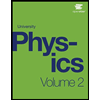

Glencoe Physics: Principles and Problems, Student...
Physics
ISBN:9780078807213
Author:Paul W. Zitzewitz
Publisher:Glencoe/McGraw-Hill

College Physics
Physics
ISBN:9781938168000
Author:Paul Peter Urone, Roger Hinrichs
Publisher:OpenStax College

An Introduction to Physical Science
Physics
ISBN:9781305079137
Author:James Shipman, Jerry D. Wilson, Charles A. Higgins, Omar Torres
Publisher:Cengage Learning

Principles of Physics: A Calculus-Based Text
Physics
ISBN:9781133104261
Author:Raymond A. Serway, John W. Jewett
Publisher:Cengage Learning

Series & Parallel - Potential Divider Circuits - GCSE & A-level Physics; Author: Science Shorts;https://www.youtube.com/watch?v=vf8HVTVvsdw;License: Standard YouTube License, CC-BY